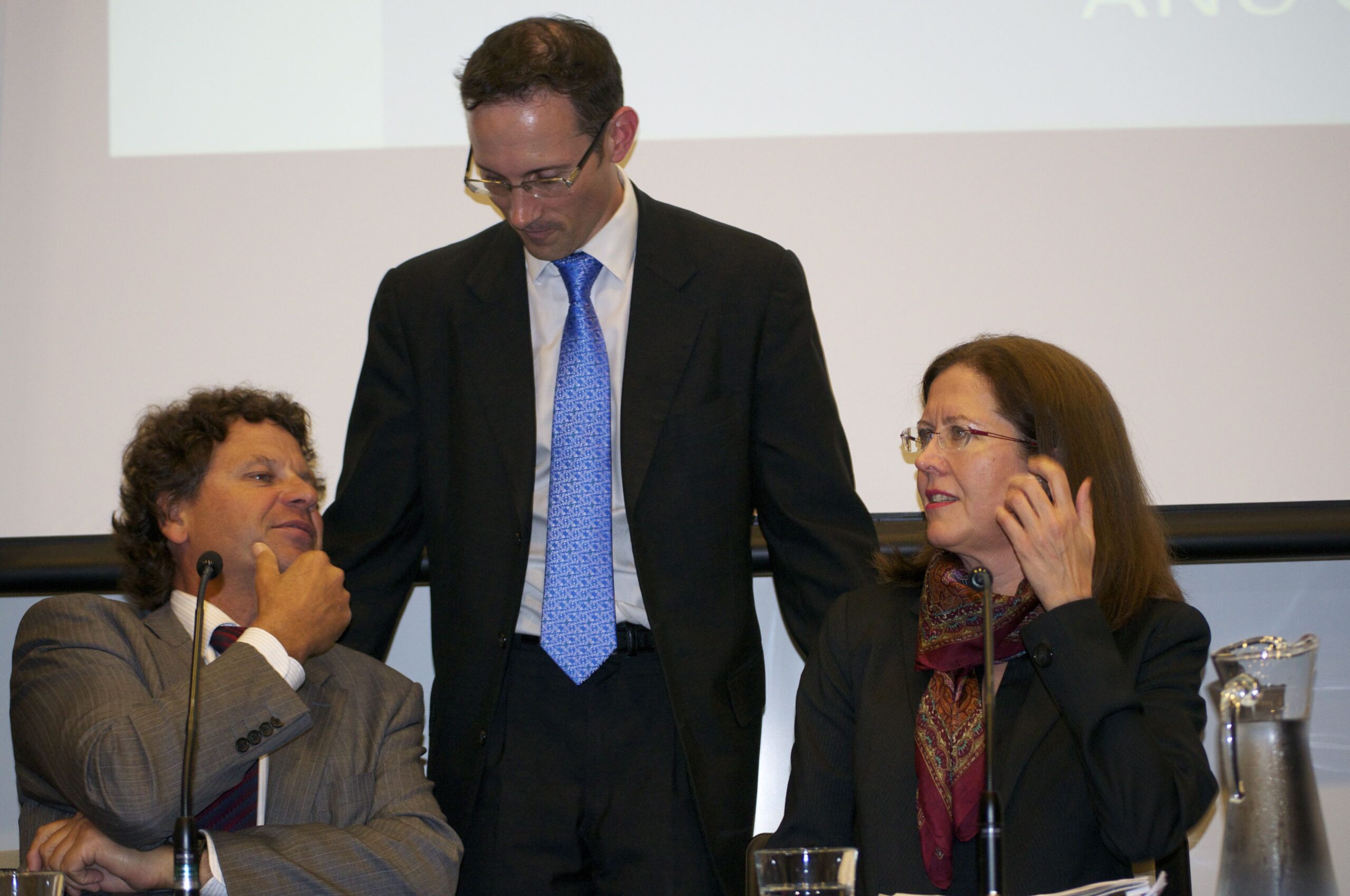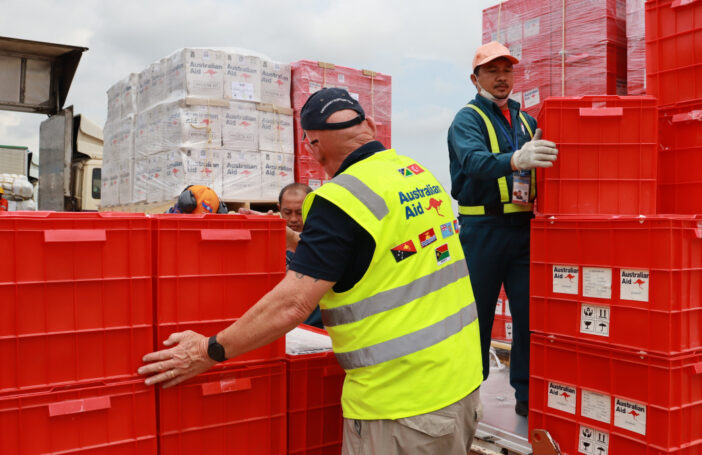On April 19th Devpolicy launched our first annual report. A video of the proceedings is available here.
As well as summarizing our progress over our first full year, we also asked a panel of distinguished thinkers to give us their ideas of what the big issues are in aid and development policy in Australia and the region. Here is a summary of their suggestions, and an invitation for you to contribute yours.
Andrew Leigh: politics, China and evaluation
In a wide-ranging speech, ALP Fraser MP Andrew Leigh highlighted three key areas for further research.
First, we need a better understanding of the politics of foreign aid. Foreign aid by its very nature is a vulnerable area of government spending, especially as Australia’s aid program scales up. We need to understand how to better make the aid arguments and how to maintain a strong bipartisan consensus for aid.
Second, we need to focus on the rise of China as an aid donor. We need to work towards shifting China’s aid program towards poverty alleviation and away from political positioning.
Third, we need more randomized trials of aid projects. AusAID, like many government agencies, currently does no randomized trials. While they might not be the complete solution, they do provide the best evidence as to what works, and need to be brought into the mix, as part of a focus on aid effectiveness.
Julia Newton-Howes: effective for what?
The presentation of CARE CEO Julia Newton Howes can be found here. Julia argued that the big issues we needed to grapple with were: the evolution of the global aid architecture and disappearance of a single accepted aid paradigm; the central importance of inequality and discrimination; the growing impact of population pressures and climate change; and the need to look at good governance from the bottom up, through civil society.
Julia also highlighted the need to move beyond talking about aid effectiveness and start talking about “effective for what.” She highlighted three recent articles in The Australian (see here, here and here) that underline the confusion in the public of what an effective aid program actually is: is it one which reduces poverty, or promotes Australia’s image, or encourages cultural exchange?
Simon McKean: low-hanging fruit and defence
2011 Australian of the Year and prominent businessman Simon McKean highlighted four major issues.
The first is the vital importance of communication. How can we effectively communicate the aid program to the broader public? We need to show that poverty eradication is doable within our generation. We need to take advantage of low-hanging fruit, by tackling what is doable (such as the eradication of polio), committing to it and ticking it off the list. This could then be effectively communicated as a definitive aid success.
The second is the defence budget. Simon argued that anyone who is passionate about development and aid should have an unashamed second objective of winding down our defence spending. If we are truly interested in self-preservation we will do a lot better investing more money in our neighbours’ prosperity through the aid program than funding armed forces.
The third is PNG and the Pacific. Australia is already about the most prosperous nation in the world, but we need to look beyond that to becoming a part of the most prosperous region in the world. PNG and the Pacific needs to be taken much more seriously in political discourse in Australia.
The fourth and last is private sector. Inclusive development as a goal for the private sector has a long way to go in Australia (further than in other countries).
What do you think?
What do you think are the big issues facing aid and development policy in Australia and the region? What should we be researching? Please add your suggestions in the comments below or get in touch with us through email, Twitter or Facebook.
Jonathan Pryke is a researcher at the Development Policy Centre.






I find the entire debate on development aid revolving and fascinating having worked in the sector for over 20 years. The following are general views targeting most donor agencies and INGOs and my intention is to provoke a practical discussion:
1. While aid is a good tool to facilitate development in many different ways, I often get the impression that at times donor agencies are taking away the role of the government and it could be that national budgets for certain sectors such as health, clean running water and health seem to be shrinking. I do think donors should ask the governments, or implementers to co-fund significantly as a way of demonstrating commitment and sustainability (this can be reviewed by countries instead of one foot fits all) There seems to be limited discussion on sustainability or transition plans in some of the projects/programs. Are donors doing less or more harm? Other countries have a lot of resources but they still continue to receive funding. Will they not then abuse their own revenue as they rely on spending donor funds? Please mobilize support to bring the discussion on sustainability back on the national and international agendas.
2. Let’s all pause and ask ourselves how we can increase impact by reducing duplication and enhancing transparent coordination and collaboration, the two fundamental concepts that can potentially result in significant savings. Implementers, donors and INGOs have to start talking to each other more often and honestly (to avoid recycling funds) and a proper mapping exercise needs to be presented systematical and not for the sake of meeting a proposal condition before funding is approved. My suggestion is that funding models need to be adjusted to appropriately align to the current context. Twenty years ago and many years beyond, and taking into account many variables including lack of systems then, the fact is that funding was less but the impact/results was greater, for example look at what the missionaries and volunteers did, they built some of the durable hospitals and schools we see today and provided basic furniture therein, trained medical personnel, sent many people to school nationally and abroad, but with way less money that we see being channeled to other countries by donors (examples on the work of missionaries can be found in some of the countries in Africa and I have taken these to be good lessons). While some impact is seen in other countries, it is also important to establish, where is the money going- is the current level of funding sustainable and for how long- could this money be used to develop sustainable and revenue generating infrastructures such as the HIVAIDS levy in Zimbabwe-with improvements it’s a good starring example despite all these challenges? What can we learn from the past regarding value for money and empowering governments and communities-? Yes, the costs may have gone up over the years, but we can also consider going back to simplicity and innovative ways that result in long term sustainability?
3. Please exploit the development of practical, simple and easy to monitor systems that can also make implementers accountable, for example how much money actually reaches the person who is being provided with ARVS or an orphan who is being sent to school. This unit cost can also help governments to budget with sustainability in mind and for a better future.
4. Please exploit how the multi nationals and private sector can also contribute towards the development sector.
Some of these issues were considered about 20 years ago, under the heading of the “peace dividend” after the end of the Cold War. During the 1990s, there seemed a strong movement to support the UN peacekeeping efforts through the “Blue Berets” – note “Berets”, not “Helmets”.
If we are to spend money on the Australian Defence Forces, then their use in supporting the UN peacekeeping missions would be welcome. As we did after the first Gulf War in northern Iraq (“Operation Habitat”), in Cambodia, Somalia, partially in Rwanda and could do elsewhere. Still.
Recognising that the ADF is on a war-footing at the moment, then there are military skills in medicine and building clean water wells that can still be utilised to protect civilians in times of civil unrest and armed conflicts.
Especially, if you happen to believe in the following obligations of the Convention on the Rights of the Child (signed by Australia) and CROC’s Article 38(4):
“4. In accordance with their obligations under international humanitarian law to protect the civilian population in armed conflicts, States Parties shall take all feasible measures to ensure protection and care of children who are affected by an armed conflict”.
Good article. A big issue is measuring the effectiveness of scholarships. It becomes more difficults with the short term awards. How can one determine impact of the short term awards that Australia is increasingly providing….